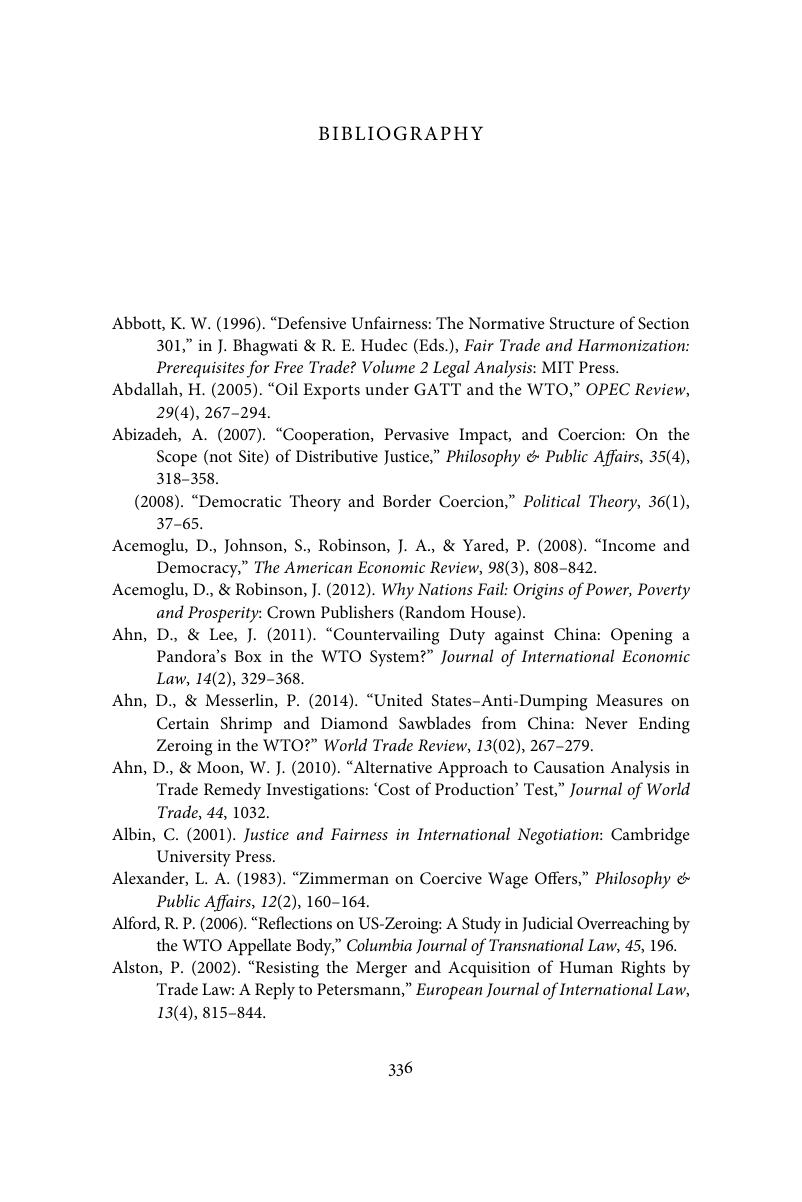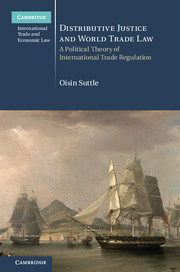Book contents
- Distributive Justice and World Trade Law
- Cambridge International Trade and Economic Law
- Distributive Justice and World Trade Law
- Copyright page
- Contents
- Preface
- Table of Cases
- Table of Treaties, Instruments, and Official Documents
- Abbreviations
- Part I Foundations
- Part II Justice
- Part III Law
- Part IV Progress
- Bibliography
- Index
- References
Bibliography
Published online by Cambridge University Press: 29 September 2017
- Distributive Justice and World Trade Law
- Cambridge International Trade and Economic Law
- Distributive Justice and World Trade Law
- Copyright page
- Contents
- Preface
- Table of Cases
- Table of Treaties, Instruments, and Official Documents
- Abbreviations
- Part I Foundations
- Part II Justice
- Part III Law
- Part IV Progress
- Bibliography
- Index
- References
Summary

- Type
- Chapter
- Information
- Distributive Justice and World Trade LawA Political Theory of International Trade Regulation, pp. 323 - 335Publisher: Cambridge University PressPrint publication year: 2017



